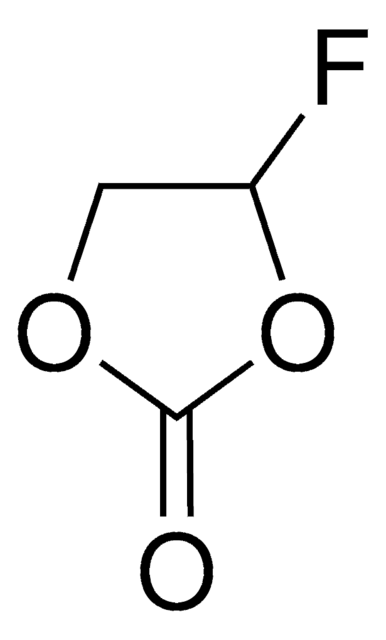Wichtige Dokumente
GF40266682
Lithium
foil, not light tested, 38x500mm, thickness 0.20mm, as rolled, 99.9%
Synonym(e):
Lithium, LI000220
About This Item
Empfohlene Produkte
Assay
99.9%
Form
foil
Hersteller/Markenname
Goodfellow 402-666-82
Widerstandsfähigkeit
9.446 μΩ-cm, 20°C
Größe × Dicke
38x500 mm × 0.20 mm
bp
1342 °C (lit.)
mp (Schmelzpunkt)
180 °C (lit.)
Dichte
0.534 g/mL at 25 °C (lit.)
SMILES String
[Li]
InChI
1S/Li
InChIKey
WHXSMMKQMYFTQS-UHFFFAOYSA-N
Suchen Sie nach ähnlichen Produkten? Aufrufen Leitfaden zum Produktvergleich
Allgemeine Beschreibung
Anwendung
- A retrospective on lithium-ion batteries: This article reviews the contributions in the development of lithium-ion batteries, discussing inspirational insights to guide future breakthroughs in battery technology (J Xie, YC Lu, 2020).
- Guidelines and trends for next-generation rechargeable lithium and lithium-ion batteries: This review discusses the limitations of commercial lithium-ion batteries and explores the directions for next-generation batteries (F Wu, J Maier, Y Yu, 2020).
- Prospects for lithium-ion batteries and beyond—a 2030 vision: This article explores the future of lithium-ion batteries and discusses current strategies to improve these and next-generation battery technologies (CP Grey, DS Hall, 2020).
- Lithium brines: A global perspective: This study offers a global perspective on lithium brines, discussing the critical and technologically important roles of lithium, which is in increasing demand (LA Munk, SA Hynek, DC Bradley, D Boutt, K Labay, 2016).
Rechtliche Hinweise
Lagerklassenschlüssel
4.3 - Hazardous materials which set free flammable gases upon contact with water
WGK
WGK 1
Flammpunkt (°F)
Not applicable
Flammpunkt (°C)
Not applicable
Hier finden Sie alle aktuellen Versionen:
Analysenzertifikate (COA)
It looks like we've run into a problem, but you can still download Certificates of Analysis from our Dokumente section.
Wenn Sie Hilfe benötigen, wenden Sie sich bitte an Kundensupport
Besitzen Sie dieses Produkt bereits?
In der Dokumentenbibliothek finden Sie die Dokumentation zu den Produkten, die Sie kürzlich erworben haben.
Kunden haben sich ebenfalls angesehen
Unser Team von Wissenschaftlern verfügt über Erfahrung in allen Forschungsbereichen einschließlich Life Science, Materialwissenschaften, chemischer Synthese, Chromatographie, Analytik und vielen mehr..
Setzen Sie sich mit dem technischen Dienst in Verbindung.


